Palmoil.io Newsletter - April 2025
Palmoil.io launched a new jurisdictional landscape dashboard for Indonesia, improved grievance tracking, and updated mill insights. Leo & Kris will attend the ADP Meeting on June 5.
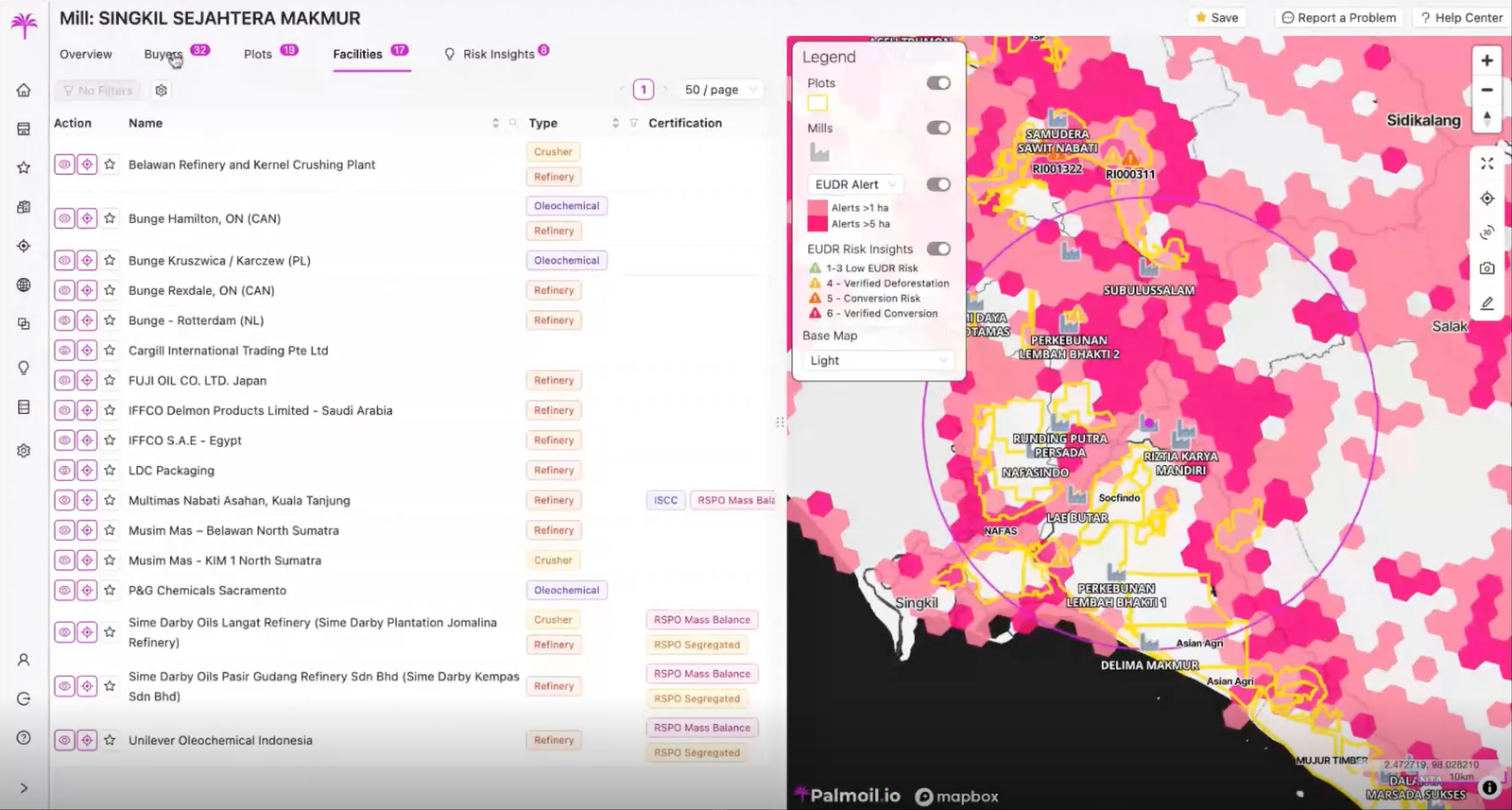
What’s new?
Jurisdictional Landscape Dashboard Launch Recap
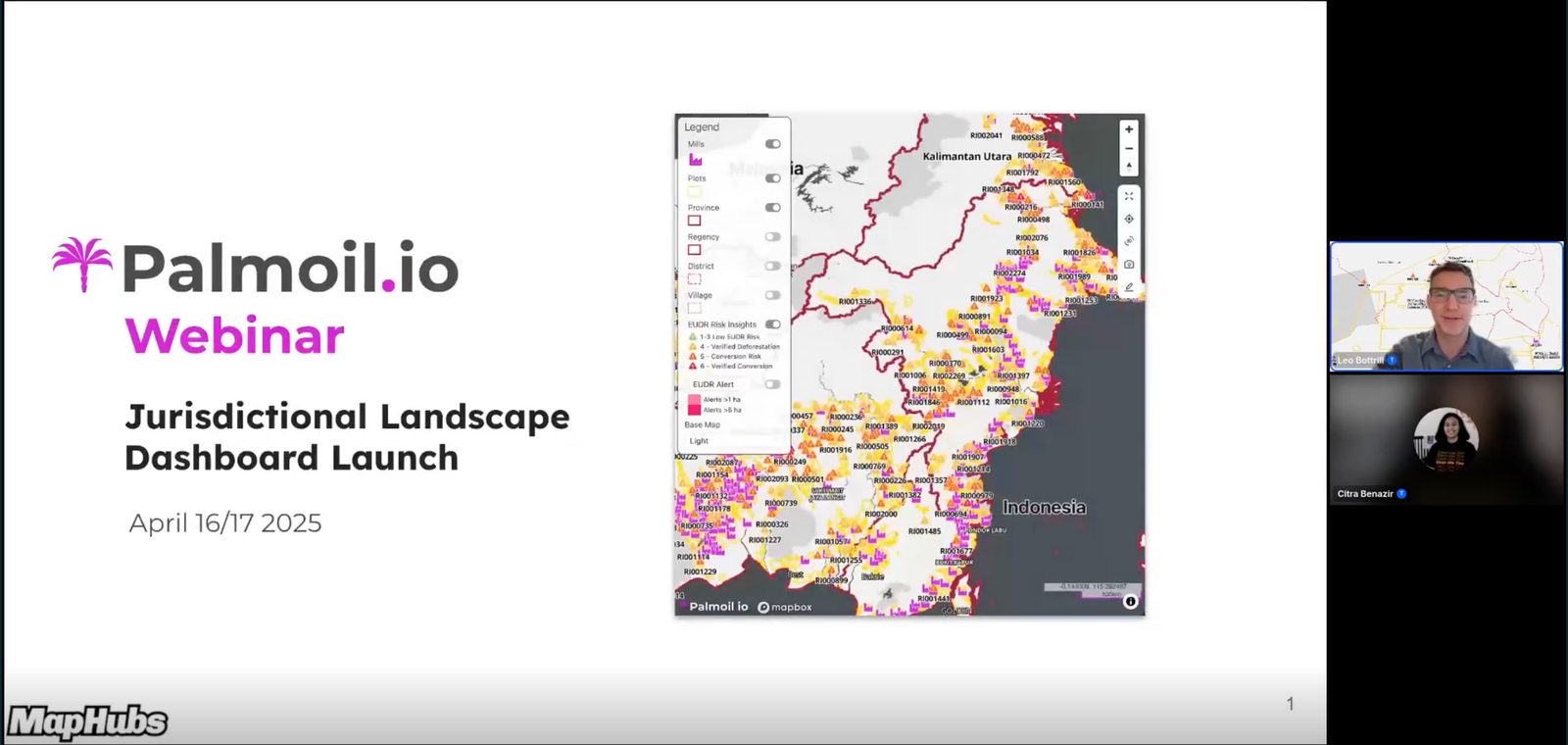
For those who attended and participated in our Palmoil.io Webinar: Jurisdictional Landscape Dashboard Launch, you already know how excited we are to finally introduce our latest innovation. The Jurisdictional Landscape Dashboard (JLD) is a powerful new tool designed to enhance transparency and monitoring in palm oil-producing regions, starting with Indonesia. Malaysia and Thailand are coming soon.
The JLD dashboard offers detailed, jurisdiction-level data on deforestation, greenhouse gas emissions, supply chains, and social grievances—covering all provinces, regencies, districts, and villages in the country.
During the webinar, we walked through the key datasets and features that make this an essential addition to Palmoil.io. We started with an introduction to the dashboard and its features, followed by a brief demo to show you what it looks like and what insights you can gain from it.
We believe it’s especially useful for project developers, investors, and civil society organizations. We also discussed what’s coming up next and how we hope people will use the dashboard to support their work. The session wrapped up with a great Q&A, featuring insightful questions about how the dashboard supports EUDR compliance and its potential applications beyond palm oil.
If you missed it, you can watch the webinar replay on demand here
And if you’d like to try it yourself, we’re offering one-month free trials. Just reach out to us at info@maphubs.com to schedule a demo!
Expanded Human Rights tracking categories in Grievance
We've expanded the Human Rights tracking categories in our Grievances Data Table. You can now sort and filter through a more comprehensive range of issues, with clearer distinctions between categories. From biodiversity loss and indigenous peoples’ conflicts to wage disputes and more, we hope these updates make your grievance tracking and reporting easier and more effective.
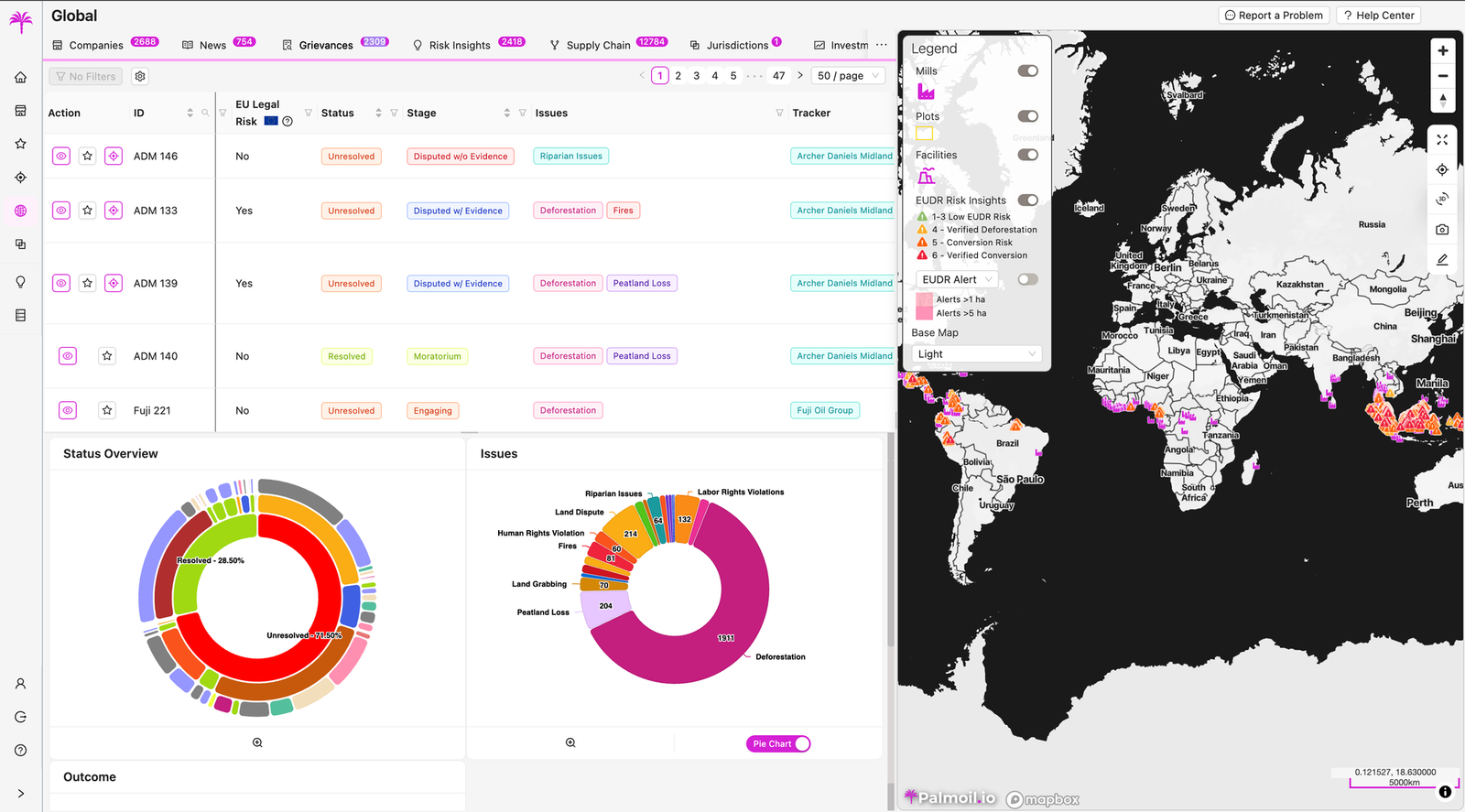
We’ve also added a Grievance Summary Chart just below the data table on the Grievance page, providing an overview of statuses, issues, and outcomes. Available in both pie chart and bar chart formats, this feature gives you a quick, high-level view of the range and depth of grievance data tracked in Palmoil.io across the palm oil supply chain.
Grievance and Risk Insight charts in Portfolio
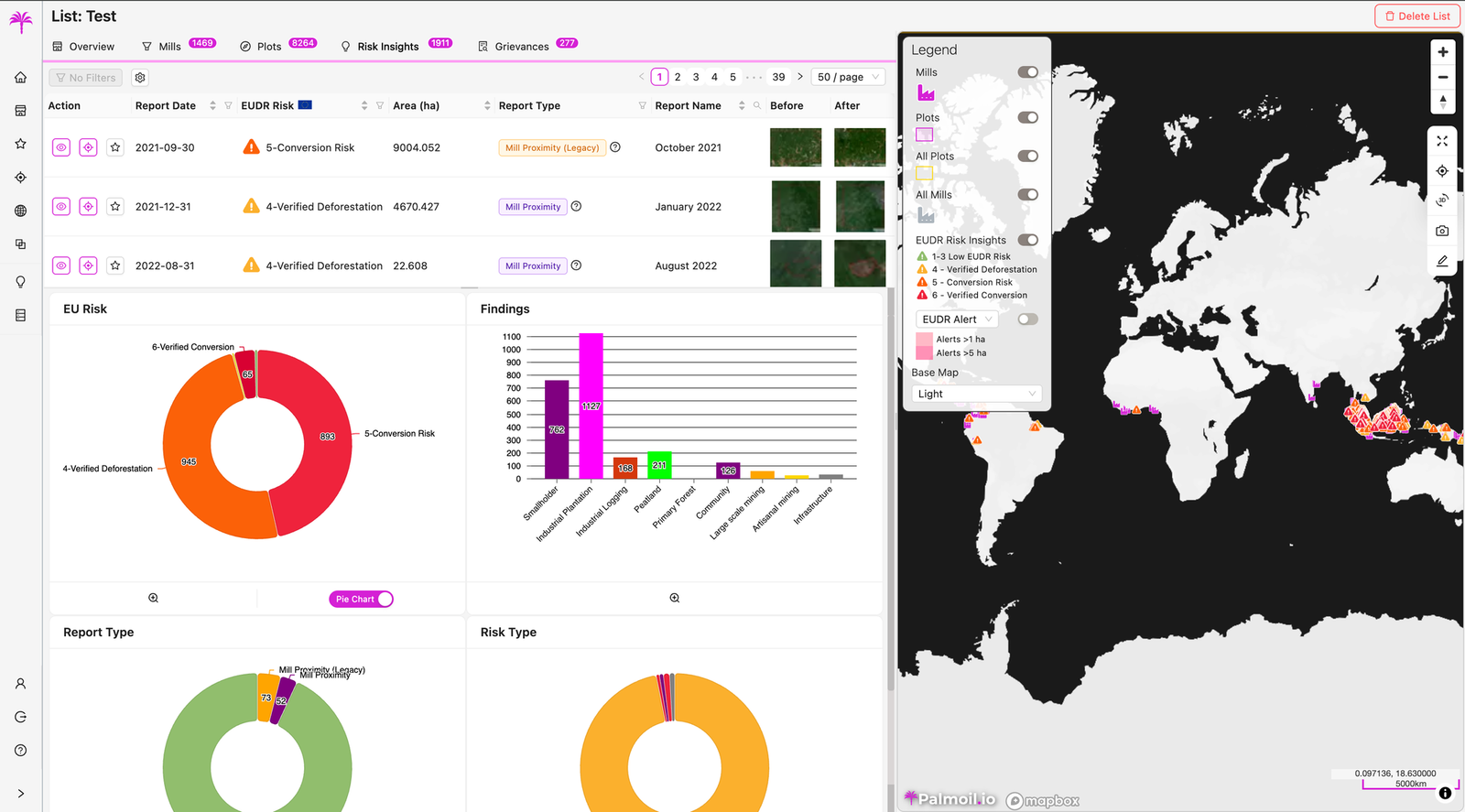
These changes are now fully integrated across the platform. If you're using the Mill List Portfolio, you can upload your mill list, which will now automatically link to the new grievance and risk insights updates. You'll also be able to view the Grievance Summary Chart, illustrating the status overview, issues, and outcomes, alongside the expanded range of issue types you can now sort and filter through.
Leo attends the "On the Road to COP30: Recognizing Indigenous Peoples Lands and Territories"
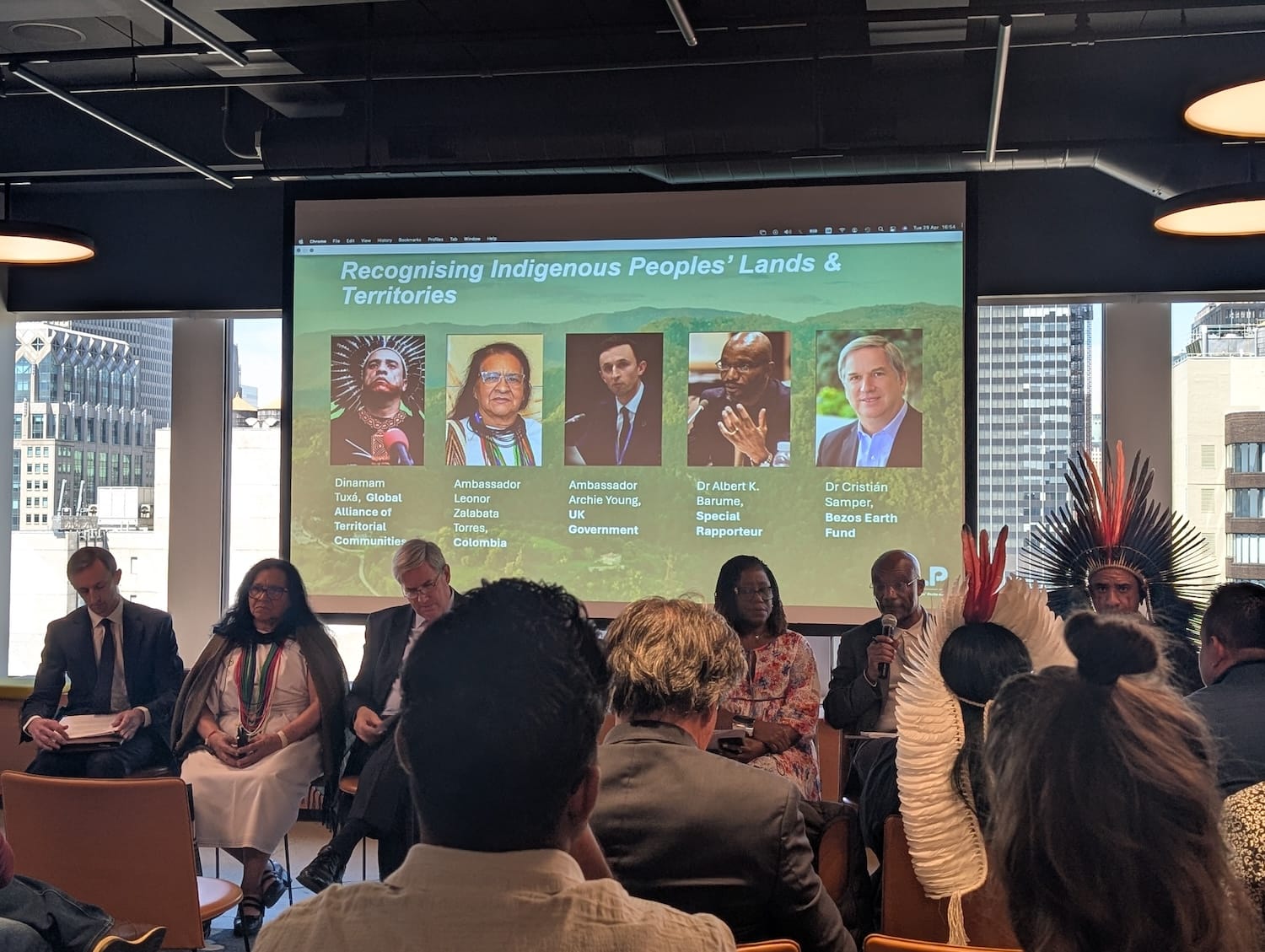
With COP30 taking place in Belem, Brazil this November, rainforest protection and Indigenous Peoples (IPs) rights will be front and center. To this end, Forest & Climate Leaders’ Partnership and the Brazilian COP30 Presidency co-hosted a meeting in New York on Tuesday (April 29) to highlight inter-governmental efforts on scaling up forest and land tenure rights for Indigenous Peoples and engage their representatives in the planning process throughout 2025.
The meeting had a distinguished panel of ambassadors to the UN from Colombia and the UK, Christian Samper from the Bezos Earth Fund, Dinamam Tuza, the Co-chair of the Global Alliance of Territorial Communities (GATC) and the UN Special Rapporteur for the rights of IPs, Dr Albert Barume. The panelists reinforced the critical importance of IPs participation and representation at COP, the governmental and philanthropic funding available, as well as the policy and institutional architecture needed to make good on various pledges.
All said, Leo shared the panelists perspectives on enormous opportunity presented by COP30, but he was also concerned that some key issues were not fully addressed. He would've like to have heard more discussion on aid budgets being cut, the emerging resource scrambles in mineral sectors, and efforts to reconcile IPs land tenure with planned economic development. And who else need to be around the table? For example, what role can major resource demand markets such as China play? Lots to think about ahead of a potentially pivotal COP30.
What’s coming up?
Leo and Kris in ADP
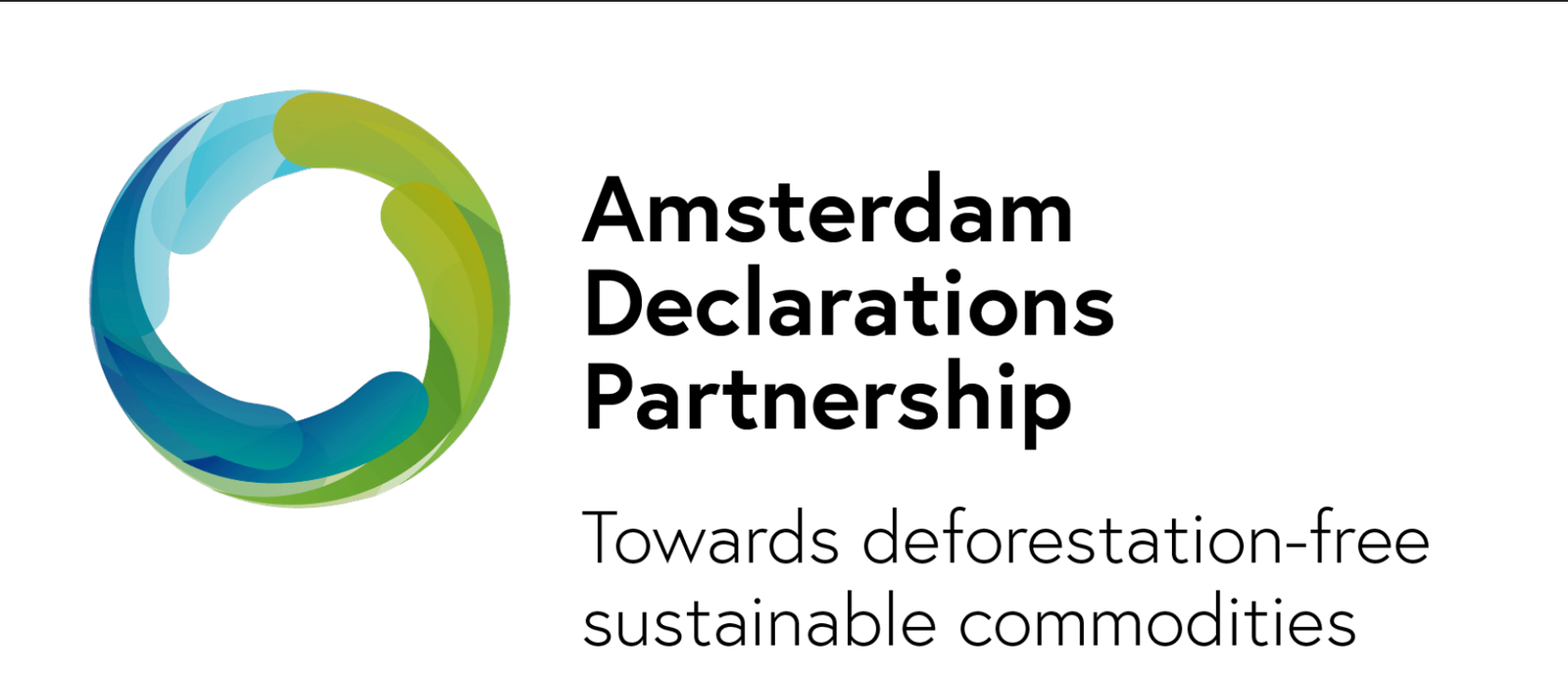
Our founders, Leo Bottrill and Kris Carle, will be attending the upcoming Amsterdam Declaration Partnership Meeting on June 5 in Berlin. Hosted by the German chair of ADP, the meeting will center on reinforcing global zero-deforestation commitments and aligning efforts to support a "farmers and forests positive" future. Topics will span regional experiences, practical supply chain solutions, just rural transitions, and the role of regulations such as the EUDR. Kris and Leo will be participating along with representatives from governments, civil society, the private sector, and producer communities and very much looking forward to joining the discussion.
Tip of the month
Country-level Overview Dashboard (Jurisdictions)
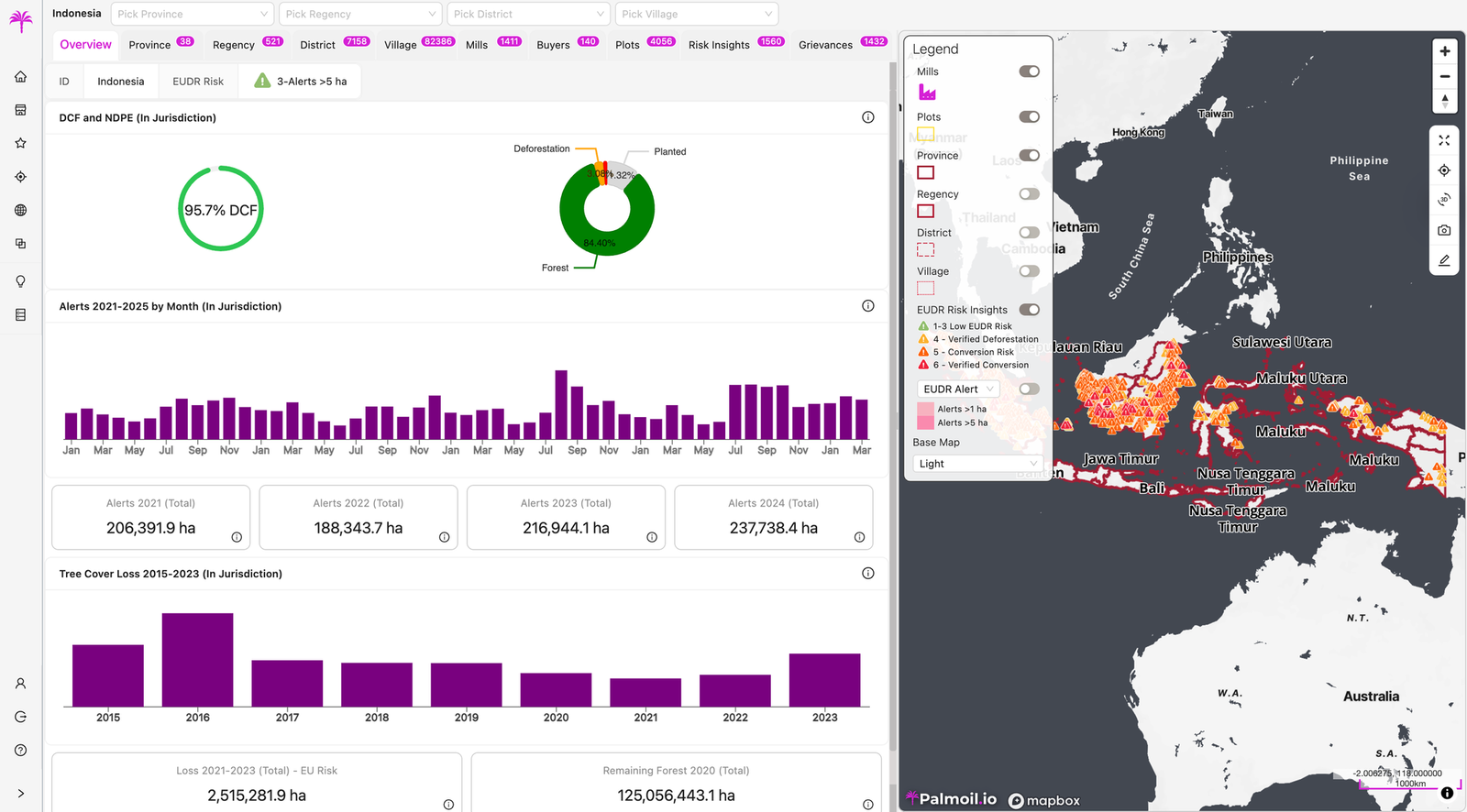
Let us introduce you to the country-level dashboard and what you can expect to find.
Each jurisdiction — including countries like Indonesia — has its own overview profile page. Profiles for Malaysia and Thailand will be available soon. These country profiles offer a high-level summary of the data available for that specific jurisdiction.
When you select a country (for example, Indonesia), the layout will feel familiar if you’ve used Palmoil.io before. You'll see a series of tabs across the top of the page, allowing you to browse through different datasets and tables. On the right-hand side, you’ll find our interactive overview map. It’s centered on the selected country and features a legend displaying various available datasets. You can easily switch between datasets and turn the legend on or off based on your needs.
The map includes detailed information such as mill and plot locations, EUDR alerts, risk insight reports, and administrative boundaries from the provincial level down to village borders. On the left-hand side, you’ll find a summary of key information, including DCF and NDPE status, monthly alerts from 2021 to 2025, and tree cover loss data spanning 2015 to 2023. This provides a broader view of the data available for Indonesia.
Benefit of the month
Select a specific province to village location (Jurisdictions)
Selecting a specific province to village location (Jurisdictional Landscape Dashboard)
Our new Jurisdictional Landscape Dashboard is designed to help you work efficiently. When you select a country—like Indonesia—you’ll be directed to an Overview Dashboard. From there, you can easily drill down from the province level all the way to individual villages, allowing you to quickly find or navigate to your specific area of interest.
Simply use the dropdown search bar at the top of the page to select a province, regency, district, or village. This feature makes it easier than ever to monitor deforestation and grievances directly within the areas tied to your supply chain.
Get in touch!
And if you’d like to try it yourself, we offer one-month free trials. Email us at info@maphubs.com to schedule a demo!

